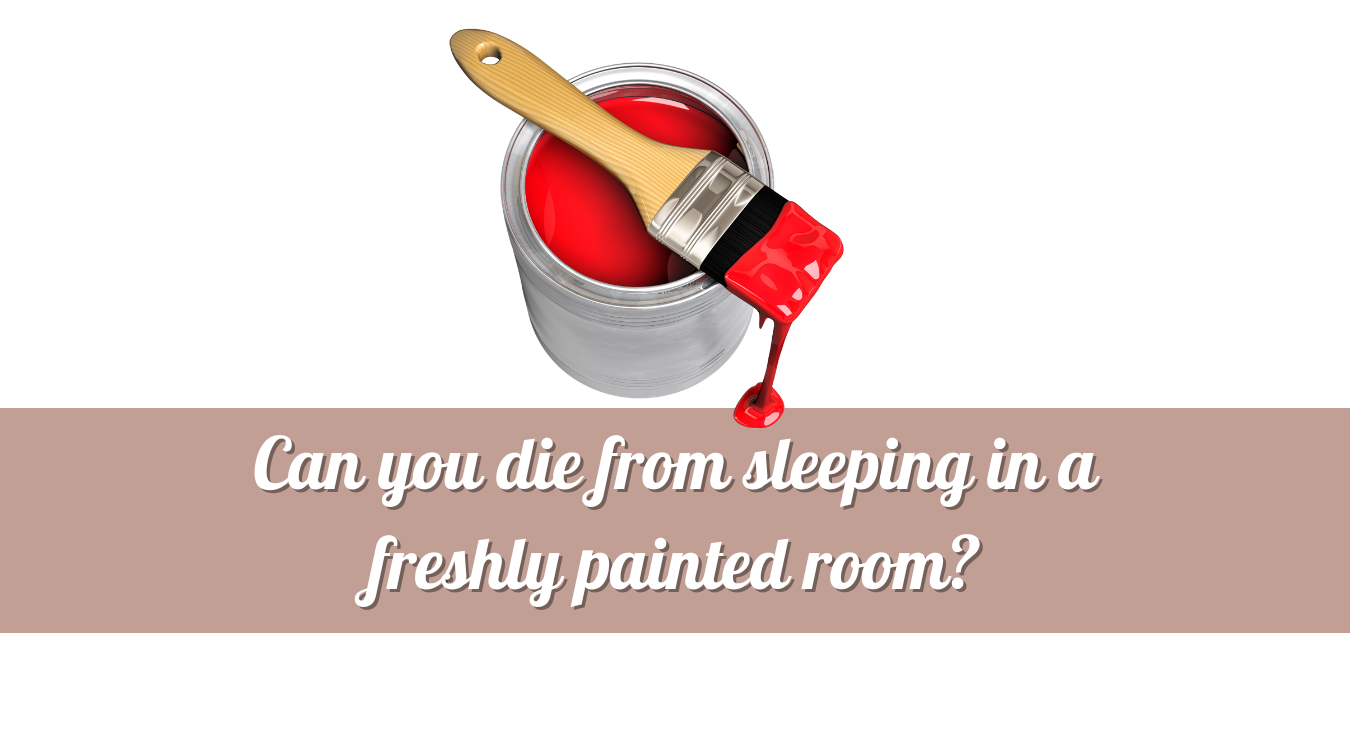
Sleeping in a Freshly Painted Room: What You Need to Know
The allure of a freshly painted room is undeniable—the crisp, clean walls, the invigorating sense of renewal, and the satisfaction of a completed project. However, when it comes time to sleep in that newly refreshed space, you may find yourself wondering, "Is it safe to sleep in a freshly painted room?" The answer is not as straightforward as you might think. Let's dive into the various aspects of sleeping in a newly painted room, exploring the potential risks, the benefits of non-toxic paints, and the pros and cons of making the room your new sleeping haven.
The Inconvenience and Health Concerns of Sleeping in a Freshly Painted Room
One of the first challenges you may encounter when considering sleeping in a freshly painted room is the inconvenience it brings. Painting often means moving furniture, covering surfaces, and temporarily losing the use of the space. For those living in small apartments or homes, this can be particularly troublesome. If space is already at a premium, losing access to a room—especially a bedroom—can be a significant inconvenience.
Beyond the inconvenience, the most pressing concern is whether it's safe to sleep in a room with fresh paint. Traditional paints contain volatile organic compounds (VOCs), chemicals that evaporate into the air as the paint dries. These VOCs can cause a range of health issues, from headaches and dizziness to more severe respiratory problems. In extreme cases, prolonged exposure to high levels of VOCs could potentially lead to serious health issues, prompting some to ask, "Can you die from sleeping in a freshly painted room?"
While death from sleeping in a freshly painted room is highly unlikely, it's not without risks. The severity of symptoms can vary depending on the type of paint used, the size of the room, ventilation, and individual sensitivity to chemicals. For those with respiratory issues, allergies, or sensitivities to chemicals, the risks are higher. Even for those without preexisting conditions, sleeping in a room filled with VOCs is not advisable.
Non-Toxic Paints: A Safer Alternative
Thankfully, the market has responded to these concerns with the development of non-toxic, low-VOC, and zero-VOC paints. These paints are designed to be safer for indoor use, emitting fewer harmful chemicals into the air. But are they really a viable solution?
Benefits of Non-Toxic Paints
Non-toxic paints offer several advantages. First and foremost, they reduce the risk of health problems associated with traditional paints. For families with young children, pregnant women, or individuals with respiratory conditions, non-toxic paints provide peace of mind. They also contribute to better indoor air quality, which is particularly important in homes where space is limited, and proper ventilation may be challenging.
Another significant benefit is the reduced environmental impact. Non-toxic paints are often made with fewer synthetic chemicals, making them more environmentally friendly. Many brands even offer paints with natural ingredients, further reducing the carbon footprint of your home improvement project.
Drawbacks of Non-Toxic Paints
However, non-toxic paints are not without their downsides. One of the most common complaints is their performance. Non-toxic paints may require more coats to achieve the same level of coverage as traditional paints, which can increase the time and cost of your project. Additionally, these paints may not be as durable, meaning they might require more frequent touch-ups or repainting.
Another issue is availability and cost. Non-toxic paints are often more expensive than their conventional counterparts, and they may not be as widely available, especially in certain colors or finishes. This can limit your options when it comes to choosing the perfect shade for your space.
Weighing the Pros and Cons
When deciding whether to sleep in a freshly painted room, it's essential to weigh the pros and cons. If you've used a traditional paint with high levels of VOCs, it may be worth the inconvenience of sleeping in another room or even staying elsewhere for a few days. This can help avoid the potential health risks associated with inhaling VOCs while you sleep. Ensure the room is well-ventilated during this time, using fans and open windows to expedite the drying process and reduce VOC levels.
On the other hand, if you've opted for a non-toxic, low-VOC, or zero-VOC paint, the risks are significantly lower. You might still notice a faint smell, but it's far less likely to cause health problems. In this case, the decision to sleep in the room comes down to personal comfort. If the smell is bothersome or if you have any lingering concerns, err on the side of caution and give the room extra time to air out.
Practical Tips for a Safer Experience
Whether you're using traditional or non-toxic paint, here are some practical tips to ensure a safer experience:
-
Ventilation is Key: Always keep windows open and use fans to circulate fresh air during and after painting. This helps dissipate any lingering fumes.
-
Check the Paint Label: Before purchasing paint, check the label for information on VOC content. Opt for low-VOC or zero-VOC options whenever possible.
-
Time Your Project Wisely: If possible, plan your painting project when the weather is mild, allowing you to keep windows open without compromising indoor comfort.
-
Use Air Purifiers: Consider using an air purifier with a HEPA filter to reduce airborne particles and odors in the freshly painted room.
-
Avoid Immediate Use: Give the paint adequate time to dry and cure before moving back in. Even non-toxic paints benefit from a few extra hours or days of ventilation.
Alternatives for Speeding Up the Drying Process
When it comes to speeding up the drying process of freshly painted walls, several effective methods can help you get back to using your space sooner:
-
Increase Ventilation:
- How: Open windows and doors to allow fresh air to circulate throughout the room. Use fans to enhance airflow, positioning them near windows to push air out and draw fresh air in.
- Why It Works: Good ventilation helps to disperse the volatile organic compounds (VOCs) emitted by the paint, speeding up the evaporation process. The continuous exchange of air reduces the concentration of paint fumes and accelerates drying.
-
Use a Dehumidifier:
- How: Place a dehumidifier in the freshly painted room and set it to a low humidity level.
- Why It Works: Dehumidifiers remove moisture from the air, which is essential for paint to dry properly. Lower humidity levels speed up the drying process by allowing water-based paints to evaporate more quickly.
-
Turn Up the Heat:
- How: Increase the temperature in the room by using space heaters or adjusting the thermostat.
- Why It Works: Warmer temperatures accelerate the drying process by causing the solvents and water in the paint to evaporate faster. However, be cautious not to overheat the room, as this can lead to cracking or uneven drying.
-
Use Drying Accelerators:
- How: Some paint brands offer additives or drying accelerators that you can mix with the paint before application.
- Why It Works: These additives are formulated to speed up the chemical reaction that allows the paint to cure and dry, making them a convenient option if you're in a hurry.
Using Bicarbonate of Soda to Absorb Fumes
Bicarbonate of Soda (Baking Soda) as a Fume Absorber:
- How to Use It:
- Place several open containers filled with bicarbonate of soda around the freshly painted room. Position them near the walls and in corners where fumes may accumulate. Leave the containers in place for at least 24-48 hours, or until the smell dissipates.
- Why It Works:
- Chemical Composition: Bicarbonate of soda, or sodium bicarbonate (NaHCO₃), is a mild alkali with the ability to neutralize acids and absorb odors. When paint dries, it releases VOCs, some of which are acidic in nature. The bicarbonate reacts with these acidic components, neutralizing them and reducing the intensity of the fumes.
- Odor Absorption: Sodium bicarbonate has a porous structure that allows it to trap and absorb odors from the air. As the fumes are drawn into the surface of the bicarbonate, the overall smell in the room diminishes. This makes it an effective, natural way to reduce the lingering odor of fresh paint.
By combining these methods, you can significantly reduce the drying time and minimize the presence of paint fumes in your room, making it safer and more comfortable to use sooner.
Conclusion: A Personal Choice
In conclusion, sleeping in a freshly painted room is a decision that depends on several factors, including the type of paint used, the size and ventilation of the room, and your personal health considerations. While non-toxic paints offer a safer alternative, they come with their own set of pros and cons. By taking the necessary precautions, you can minimize the risks and enjoy your newly refreshed space with peace of mind.
So, the next time you're tempted to crawl into bed in a room that smells of fresh paint, remember to weigh the risks and benefits. With a little planning and awareness, you can ensure that your painting project is not just beautiful but safe and comfortable too.



